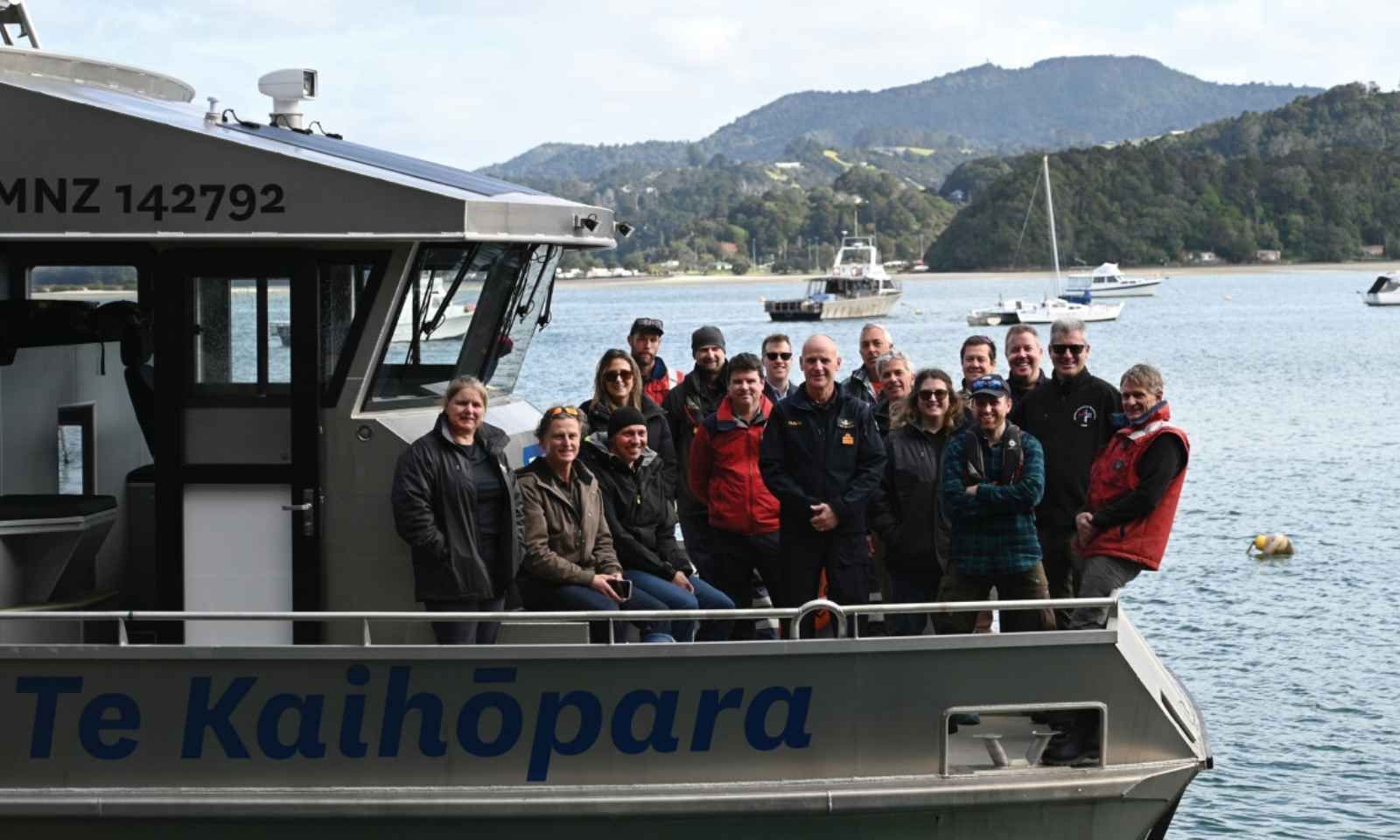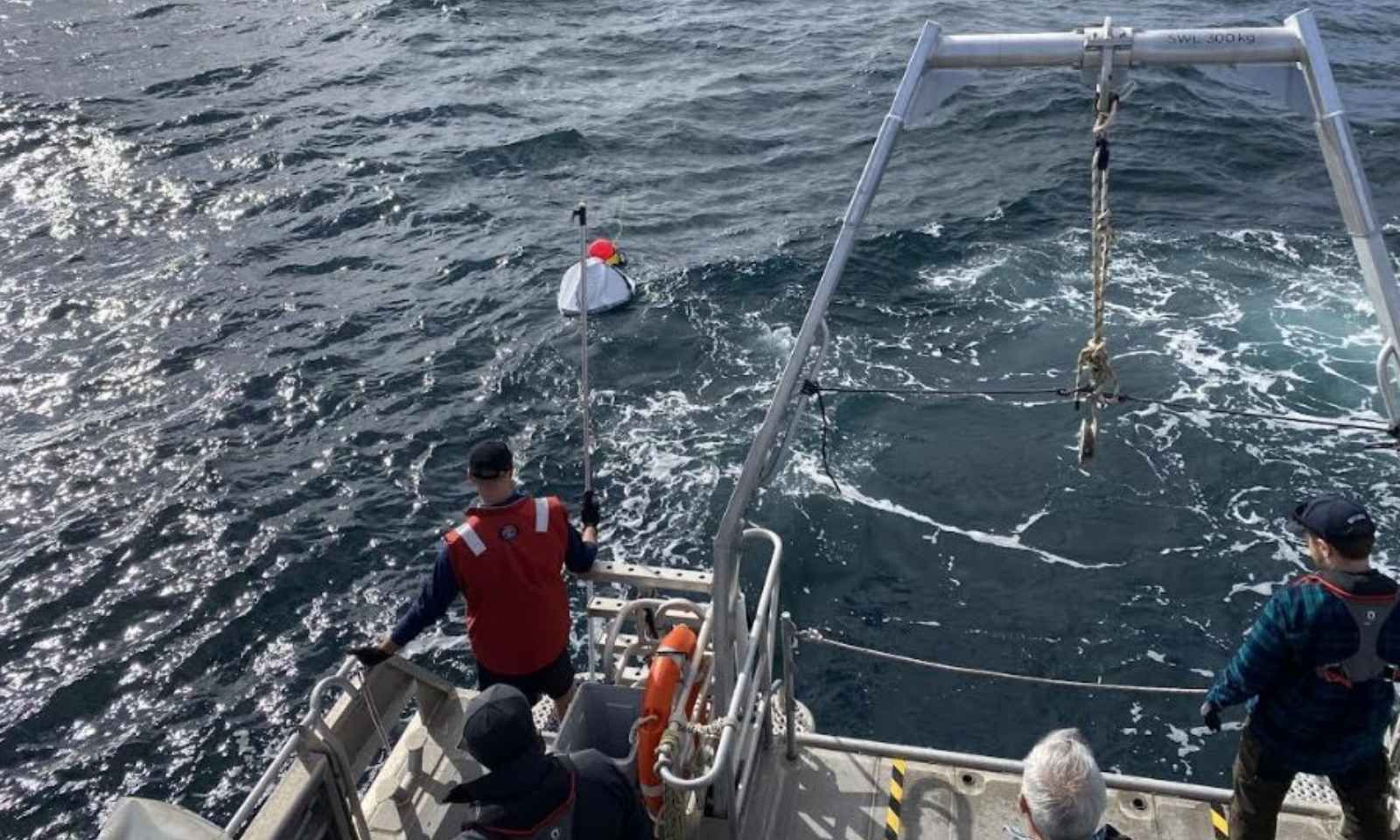

The floating reflector, developed by University of Auckland scientists in collaboration with the New Zealand Defence Force, uses a space-based synthetic aperture radar to detect people lost at sea.
Photo/New Zealand Defence Force
‘In it to save lives’: A lifesaving locator designed for Pacific realities at sea
Researchers at Auckland University and the New Zealand Defence Force are developing a small, affordable reflector to aid in locating missing vessels from space in vast search areas.


Advocates push for healing as redress debate continues for Lake Alice survivors


Most New Zealand teachers set for six-figure pay after new deal struck with govt

Jai Opetaia set to close out 2025 on top against German opponent

Advocates push for healing as redress debate continues for Lake Alice survivors


Most New Zealand teachers set for six-figure pay after new deal struck with govt
Seafarers in the Pacific may soon have access to a low-cost lifesaving device that uses satellite radar to locate people lost at sea.
Developed by the University of Auckland and the New Zealand Defence Force, the floating reflector is made from simple household materials like foil, plastic, and tape. It works by bouncing electromagnetic energy back to passing satellites, creating a bright signal visible from space.
Project lead Dr Thomas Dowling, a scientist at the University of Auckland, says the collaboration was initiated due to New Zealand's extensive search and rescue (SAR) responsibilities, which cover 30 million square kilometres of water. The Pacific Ocean, being the largest ocean on Earth, extends from Antarctica to various island nations, including Sāmoa.
Dowling says a major challenge in search and rescue is when someone goes missing at sea, search teams only have a general direction of the lost individual’s travel. He says the decision to deploy an aircraft is also a difficult one.
“It costs quite a lot of money to run the aircraft, about $40,000 to $60,000 an hour. The idea with these reflectors is that we hear that you're lost and then we can use a satellite for a couple of thousand dollars, perhaps a bit less than that, sometimes for free.
“Then we go, ‘we think there's 10 potential things that might be you, one might be the reflector’. Then we can tell the plane or ship to go and check out those points. So rather than trying to search this huge area for you, we can search those thousands of kilometres efficiently and quickly.”
Watch Dr Thomas Dowling and Ella Fasciana’s full interview below.
The device is small enough to fit under a canoe seat and designed for Pacific realities, where many people travel long distances in small boats without expensive safety equipment. Ella Fasciana, a university engineering student, who helped build the prototypes, says accessibility was always central.
“We used pretty accessible materials so they could easily be made and spread widely, where communities could make their own in theory if they wanted to. It would allow these communities to feel more at ease when they go out to sea just in case something happens, because it's kind of like insurance,” Fasciana says.
The design has been stress-tested in harsh conditions. During a trial near Campbell Island, prototypes withstood stormy seas and 50-knot winds while remaining visible to commercial satellites. Fasciana says the reflector is angled at 45 degrees to prevent it from acting as a sail in strong winds.

Rear Admiral Mathew Williams, Vice Chief Defence Force, and senior University leaders observed the latest phase of the SAR4SaR research programme at Omaha, north of Auckland. Photo/New Zealand Defence Force
“If there was a lot of wind and rough conditions, it wouldn't actively pull you even more out to sea. They float right at the surface.” While the basic science behind the reflector is proven, the team is now focused on refining the design to ensure long-term durability and watertightness.
They are also working on artificial intelligence to automatically analyse radar data, which will help reduce false positives caused by wave crests. Dowling says they aim to keep costs minimal while empowering Pacific communities through this device.
“Ella and I have been really clear on this from the start. We're in this to save lives, that’s what we want to do. That's the guiding principle of everything that Ella and I do on this. When we're talking about how we look at mass manufacturing and getting it out there, we're very clear that we want to follow a model of social enterprise.”

The project team tests the floating reflector. Photo/New Zealand Defence Force
The project team is now looking to secure funding and expand collaboration with international partners. Dowling says Danish researchers have shown interest in adapting the design for indigenous communities in Greenland facing similar challenges in vast, remote waters.
“We're getting into the stage now where we need to get out of our lab and start talking to the real deal. If we come out there, and you see us out and about, and you're interested in it, hit us up. Email us, tell us about it and tell us what you think because this will only work and it will only save lives if people actually want to use it and see the worth in it,” Dowling says.
“Any feedback is good feedback. It's a great time just to get the word out about it, and hopefully we can accelerate the process of getting this prototype model into everybody's hands,” Fasciana says.